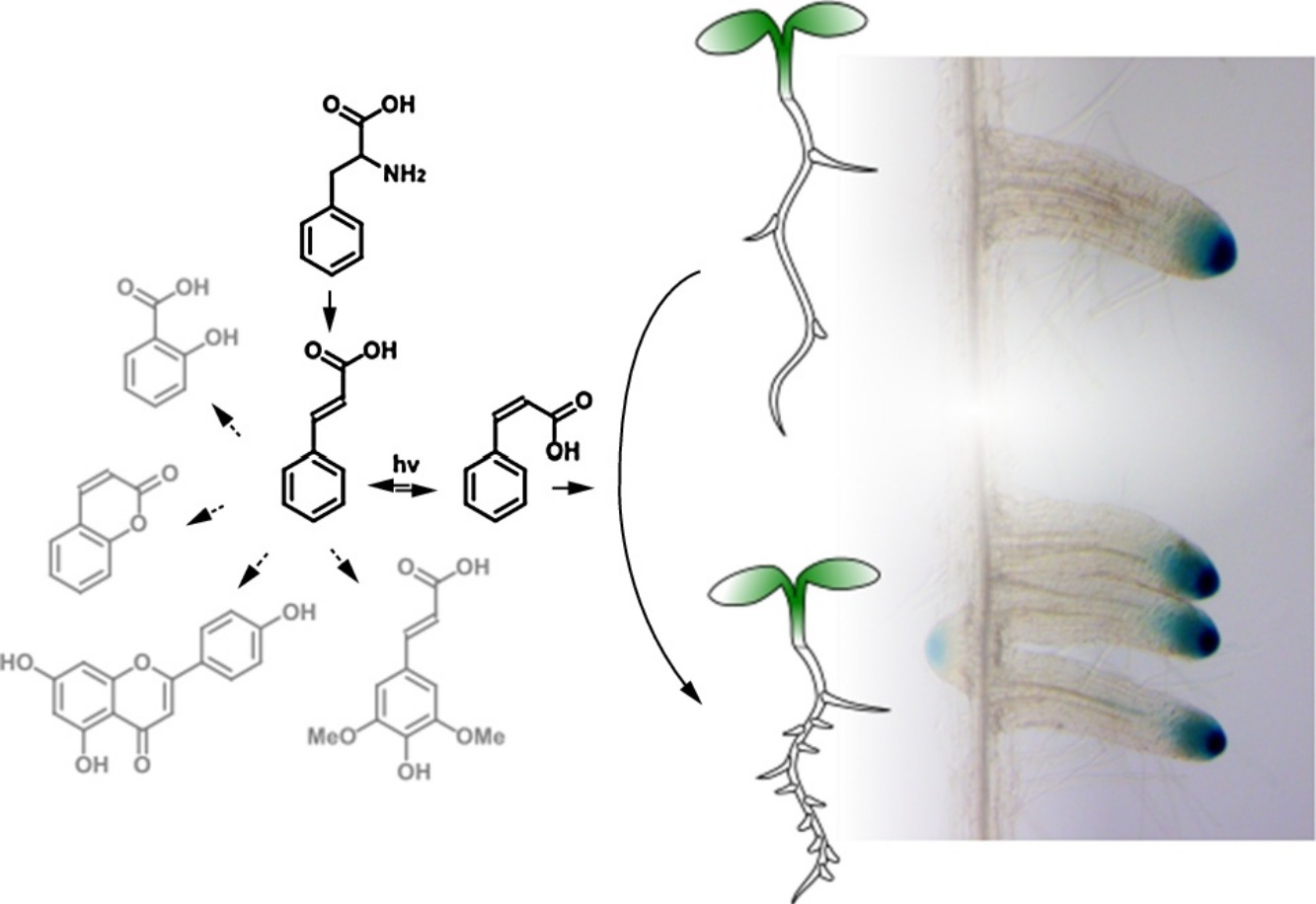A second plausible cause of the observed phenotypic consequences of lignin-modified plants is the differential accumulation of soluble bioactive phenolics in the lignin-modified plants compared to the wild type. To investigate the role of bioactive phenylpropanoids in plants, we primarily focus on cis-cinnamic acid and coumarin, using Arabidopsis as model system. cis-Cinnamic acid is the UV-isomerization product of trans-cinnamic acid, which is positioned at the entry point of the phenylpropanoid pathway. Our research demonstrated that cis-cinnamic acid acts as an auxin transport inhibitor and can be used as a natural plant growth-promoting compound (Steenackers et al., 2017; 2019).

